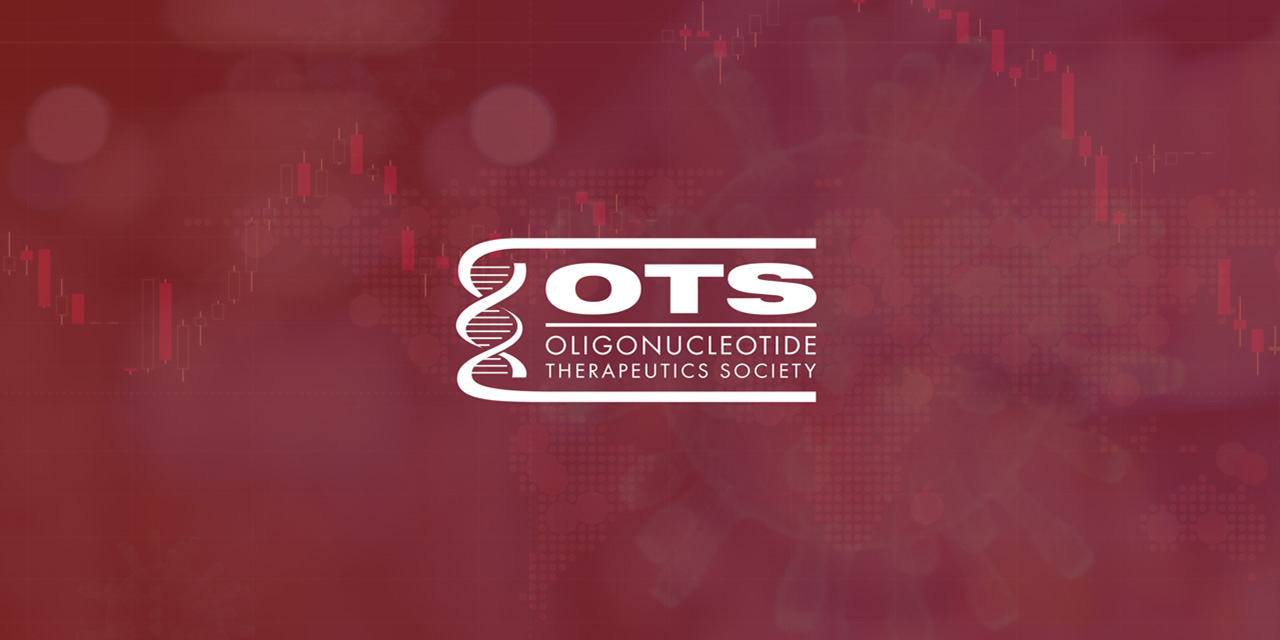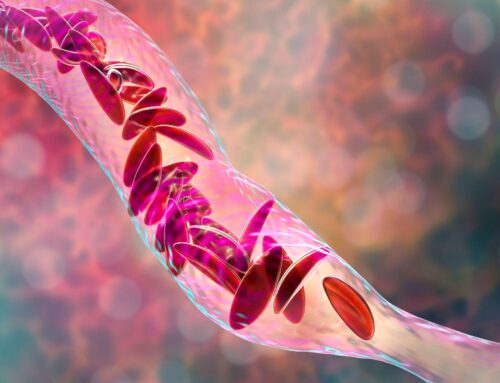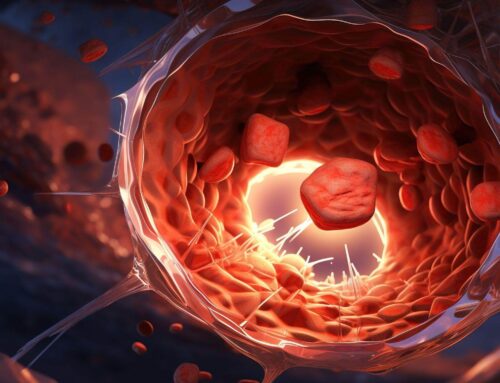Looking for something?
Oligonucleotides and the OTS Community Provide Excellent Solutions to the COVID-19 Pandemic

Oligonucleotide therapies are relatively new in the field of medicine, but they have allowed us to make astounding progress in the fight against COVID-19. Rather than simply repurposing existing drugs or spending years to develop new drugs and vaccines, oligo therapies are quickly providing solutions to this global health crisis caused by SARS-CoV-2. Some of the most promising technologies to fight the coronavirus are based on oligonucleotide therapeutics.
Our greatest achievement in this arena is the speed at which vaccines have been developed and approved for emergency use. As of January 1, 2021, two mRNA-based vaccines have been approved in various countries. In addition to vaccines, a variety of other treatments are being developed by members of the Oligonucleotide Therapeutics Society (OTS). Below we will highlight a few significant achievements and potential future developments.
OTS Members are Making Significant Contributions in the Fight Against Covid-19
In May of last year, many of our members contributed to a set of informational videos, hosted by Dr. Art Krieg, which highlight the efforts of the OTS Community to combat SARS-CoV-2 and COVID-19. These videos deliver excellent information on specific ways that oligonucleotide therapeutics can provide critical diagnostics, attack SARS-CoV-2 in cells, and allow multiple avenues to create effective vaccines. Both videos are available here.
As expected, in the eight months since these videos were created, our community has not slowed our efforts, and incredible progress has been made. Although many of the treatments in development may not be ready in time to be used widely for SARS-CoV-2, work done now will position us to respond more quickly and efficiently in future pandemics.
Safe and Effective Vaccines Developed with Record Setting Speed
As Dr. Krieg mentioned in the second webinar, the previous record to develop a vaccine was 4 years. In contrast, Moderna designed the SARS-CoV-2 vaccine and manufactured a batch for use in a clinical study in a little over 1 month. 63 days after learning the genetic sequence, the first trial participant was dosed with the vaccine. On November 16, 2020, an astonishing 10 months after beginning the process, the Phase 3 study met statistical criteria with a vaccine efficacy of 94.5%. After approval in December by the FDA for emergency use in the United States, 20 million doses were delivered. The incredible timeline and efficacy rate are similar to Pfizer and BioNTech’s RNA vaccine, which has been approved for emergency use in multiple countries. Since two RNA vaccines were developed with unprecedented speed, hundreds of millions more people around the world will be vaccinated in the first months that vaccines are available.
Additionally, after showing an efficacy rate of up to 90%, AstraZeneca’s vaccine was approved on December 30th for emergency use in the UK, and India followed suit the following day. This vaccine is not an RNA vaccine, rather it is a recombinant adenoviral vector vaccine. It contains DNA of the SARS-CoV-2 virus spike protein within a weakened chimpanzee adenovirus. With a slightly slower timeline than the RNA vaccines, the first trial did not start until April 2020 and the U.S. clinical trial is not scheduled to complete until September 2021. Although slightly less effective, it does have the advantage of being cheaper and easier to distribute than the RNA vaccines which need to be stored at freezing temperatures.
Pfizer/BioNTech and Moderna’s vaccines prove that RNA-based vaccines are safe and as effective as previous types of vaccines. Compared to DNA vaccines, RNA-based therapeutics do not carry the same risk of insertional mutations (1). “mRNA vaccination is an attractive alternative to conventional vaccine approaches because of its potent, long-lasting and safe immune responses” (9).
Many other types of vaccines are in Phase 2 and 3 trials, including non-replicating viral vector, recombinant vaccine (adenovirus type 5 vector), nanoparticle vaccine, DNA vaccine (plasmid), plant-based adjuvant vaccine, live-attenuated vaccine, and inactivated vaccine. Further, Institutes and companies in China have developed and approved three inactivated vaccines, and Russian Institutes have developed and authorized both a non-replicating viral vector and peptide vaccine.
With such a wide range of vaccines being tested against one virus, this affords scientists an incredible opportunity to determine many different vaccine variables when pitted against this type of virus. We can discover which vaccine type is safest and most effective for different population groups, how long each type provides immunity, and how it fares as the virus mutates, along with many other vital concerns that need to be considered when creating vaccines.
Oligo Therapies May Be the Key to Treating Viral Infections
For those who become ill due to SARS-CoV-2, it is imperative that we have effective treatments against the more serious and life-threatening symptoms. Although vaccines are quickly being developed, not all people will be able to receive a vaccine and not all will gain immunity. Additionally, as Uludag, et. al. state “A recent study suggested that SARS-CoV-2 is also able to spread directly from cell to cell, avoiding the neutralizing antibodies present in the extracellular space (2).” If this is true, it highlights the necessity of effective treatments for those who are exposed, since carrying antibodies may not be enough to protect everyone.
Current strategies include supportive treatments of symptoms, such as oxygen therapy, fluid management, and ventilator support.
Remdesivir, an adenosine analogue, is a broad-spectrum antiviral that has been approved in the U.S. for those who have been hospitalized with COVID-19. In the trial, patients who received it had faster recovery time and fewer serious adverse events than those who received the placebo. However, a significant number of patients (131 out of 532) still experienced serious adverse events (4).
A Phase 3 trial of VIR-7831 began in December, for treatment of adults hospitalized with COVID-19. It is a fully human anti-SARS-CoV-2 investigational monoclonal antibody that was selected based on its potential to neutralize the virus, kill infected cells, provide a high barrier to resistance, and achieve high concentrations in the lungs.
Currently, antiviral drugs have not been developed nearly to the extent that antibiotics have, and effective antiviral strategies are needed to combat SARS-CoV-2 (8). Many times, a patient who develops serious symptoms or complications will receive treatment for the symptoms, but there is a great need for more effective treatments of symptoms as well as treatments that directly combat the virus once a patient has become ill.
“Human viral pathogens are very complex and evolve rapidly, underlying both the developmental challenge and a great need for adaptable antiviral therapeutic platforms” (6). Fortunately, unique properties of oligo therapeutics could be exactly what is needed to provide a solution.
Oligo drugs are precisely synthesized, which makes them easier to control than biologics. They are more easily adapted to hit different diseases without impacting their biological mechanism of action and may be developed faster and cheaper than other drugs (3).
Here are just a few promising treatment possibilities for SARS-CoV-2 and future viruses.
- The Khvorova lab is developing a cocktail of siRNAs that target specific SARS-CoV-2 mRNAs and are delivered directly to endothelial and epithelial lung cells. This significantly reduces viral replication.
- Scientists in the Watts lab are developing viable mechanisms for delivering antisense RNA oligonucleotides (ASOs) directly to the lungs, which can significantly reduce the expression of the SARS-CoV-2 viral genes.
- Working together, the Khorova and Watts labs are designing tools that prevent SARS-CoV-2 from replicating, which greatly reduces the viral load in a patient, minimizing symptoms and incidence of serious illness.
- The Khovorova and Watts labs are not alone in forming siRNA cocktails. Many others have found that “various combinations of siRNA targeting different regions of the genome was synergistically effective to stop viral replication with greater potency (2).” Using multiple oligos may improve the chance of success and lessen the chance of mutational escape (8).
- siRNAs may also be used to suppress the ACE2 gene to prevent the spike protein from binding to the ACE2 receptor. However, this may cause undesirable symptoms in humans (6).
- Multiple groups are working on using inhalation devices to deliver RNA candidates such as mRNA, siRNA, and antisense RNA directly to the lungs (5, 2). Nanoparticle formulations are being used to deliver a wider range of therapeutic agents, including RNAi agents (2).
- Another area of focus is the cytokine storm caused by SARS-CoV-2. It may be possible to use siRNAs to target specific cytokines and chemokines to reduce the immune system response that results in a life-threatening cytokine storm (8). Traditionally, corticosteroids may be used to control the cytokine storm, but studies have shown that corticosteroid use may do more harm than good (2).
- A patent application published by Ionis Pharmaceuticals describes the invention of an ASO that targets various regions of viral RNA to reduce the activity of the SARS virus, to prevent or treat and diagnose SARS virus-associated disease (6). In a study, antisense PNAs were used against SARS-CoV which is genetically 79% similar to SARS-CoV-2 strains (7). These are two of many examples of the potential for ASOs to be used in combatting SARS-CoV-2. However, all potential ASO therapies will need further study and development before they become suitable candidates (6).
- “Ribozyme therapy is an important therapy due to its features such as high specificity and lack of immunogenic response compared to some other therapies. Therefore, the combination of ribozyme technology with antiviral drugs to treat SARS-CoV-2 infection could strengthen treatment efficacy (6).”
- Aptamers carry significant advantages, including high affinity, ease of chemical modification, low-cost, low-temperature sensitivity, rapid synthesis, and large-scale production. RNA aptamers have been used to suppress viral infection in various studies. Aptamers would need some modifications to become more stable within the cell (6).
- CRISPR/Cas13 was tested as a prophylactic antiviral CRISPR in human cells (PAC-MAN) and showed efficient degradation of SARS-CoV-2 sequences as well as the influenza A genome in vitro in human lung epithelial cells (1).
Precise, Rapid Testing Became Possible with SHERLOCK and DETECTR
As Berber, et al. state, “The emergence and outbreak of the novel coronavirus highlighted the urgent need for new therapeutic technologies that are fast, precise, stable, easy to manufacture, and target-specific for surveillance and treatment” (6). This was seen clearly in the need for diagnosing SARS-CoV-2. Luckily, companies were poised to provide this essential technology.
The novel CRISPR-based nucleic acid detection technique called SHERLOCK made history in May with the very first FDA-authorized use of CRISPR technology to detect SARS-CoV-2. The test provides precise, rapid identification (9). Another CRISPR-based nucleic acid detection test, DETECTR, has also received approval and provides results even more quickly, in around 30 minutes.
Further testing will be needed throughout the years to determine if a person carries antibodies to SARS-CoV-2. These serological tests can help determine how long a person maintains immunity when antibodies were created naturally through exposure to the virus, as well as from receiving the various types of vaccinations. High levels of precision are vital in antibody tests and developing technologies may assist in attaining greater precision.
In addition to developing diagnostics for SARS-CoV-2, our members have also produced RNA extraction kits, converted existing facilities into COVID-19 diagnostic facilities, and developed rapid detection and serological tests.
Ongoing Efforts Allow Swift Breakthroughs for Unforeseen Needs
Decades of research and progress have brought us to this place, where we can quickly provide solutions for an immediate need. Some areas of opportunity to treat those who become ill with the virus are not quite at the stage to quickly create an effective treatment. However, many of us are working on various therapies, and some may be developed quickly enough to be utilized during this pandemic. Others, although they may not be ready in time for widespread use against SARS-CoV-2, may be exactly the key needed in future pandemics. Since there have been three serious coronavirus outbreaks in the past two decades, it is highly likely that another similar outbreak will occur in the near future and our work now could prevent worldwide death and severe disease associated with possible pandemics in the near future.
References
- Ramezankhani, R., Solhi, R., Memarnejadian, A., Nami, F., Hashemian, S., Tricot, T., Vosough, M., & Verfaillie, C. (2020). Therapeutic modalities and novel approaches in regenerative medicine for COVID-19. International journal of antimicrobial agents, 56(6), 106208. https://doi.org/10.1016/j.ijantimicag.2020.106208
- Uludağ, H., Parent, K., Aliabadi, H. M., & Haddadi, A. (2020). Prospects for RNAi Therapy of COVID-19. Frontiers in bioengineering and biotechnology, 8, 916. https://doi.org/10.3389/fbioe.2020.00916
- “Innovations in Antivirals for Novel Viruses.” QPS, 2 Nov. 2020, www.qps.com/2020/11/02/oligonucleotides-innovations-in-antivirals-for-novel-viruses/.
- Beigel, J. H., Tomashek, K. M., Dodd, L. E., Mehta, A. K., Zingman, B. S., Kalil, A. C., Hohmann, E., Chu, H. Y., Luetkemeyer, A., Kline, S., Lopez de Castilla, D., Finberg, R. W., Dierberg, K., Tapson, V., Hsieh, L., Patterson, T. F., Paredes, R., Sweeney, D. A., Short, W. R., Touloumi, G., … ACTT-1 Study Group Members (2020). Remdesivir for the Treatment of Covid-19 – Final Report. The New England journal of medicine, 383(19), 1813–1826. https://doi.org/10.1056/NEJMoa2007764
- Shaffer, C. Mist begins to clear for lung delivery of RNA. Nat Biotechnol38, 1110–1112 (2020). https://doi.org/10.1038/s41587-020-0692-z
- Berber, B., Aydin, C., Kocabas, F. et al.Gene editing and RNAi approaches for COVID-19 diagnostics and therapeutics. Gene Ther(2020). https://doi.org/10.1038/s41434-020-00209-7
- Lu R, Zhao X, Li J, Niu P, Yang B, Wu H, et al. Genomic characterisation and epidemiology of 2019 novel coronavirus: implications for virus origins and receptor binding. Lancet. 2020. https://doi.org/10.1016/S0140-6736(20)30251-8.
- Rossi, J. J., & Rossi, D. (2020). Oligonucleotides and the COVID-19 Pandemic: A Perspective. Nucleic acid therapeutics, 30(3), 129–132. https://doi.org/10.1089/nat.2020.0868
- Zhang, L., & Guo, H. (2020). Biomarkers of COVID-19 and technologies to combat SARS-CoV-2. Advances in Biomarker Sciences and Technology, 2, 1–23. https://doi.org/10.1016/j.abst.2020.08.001








